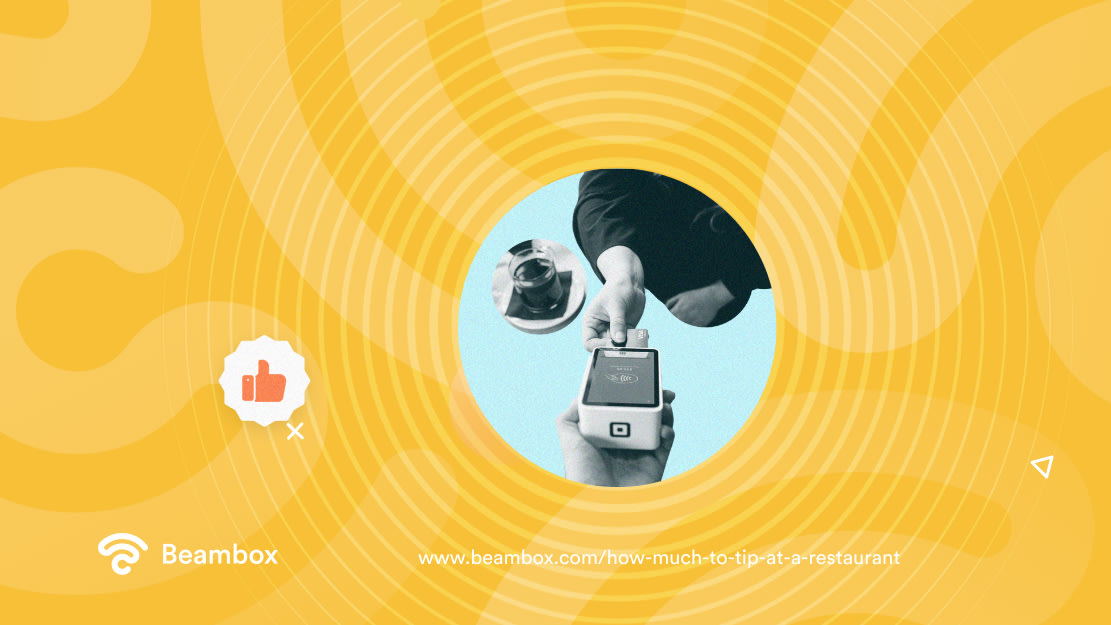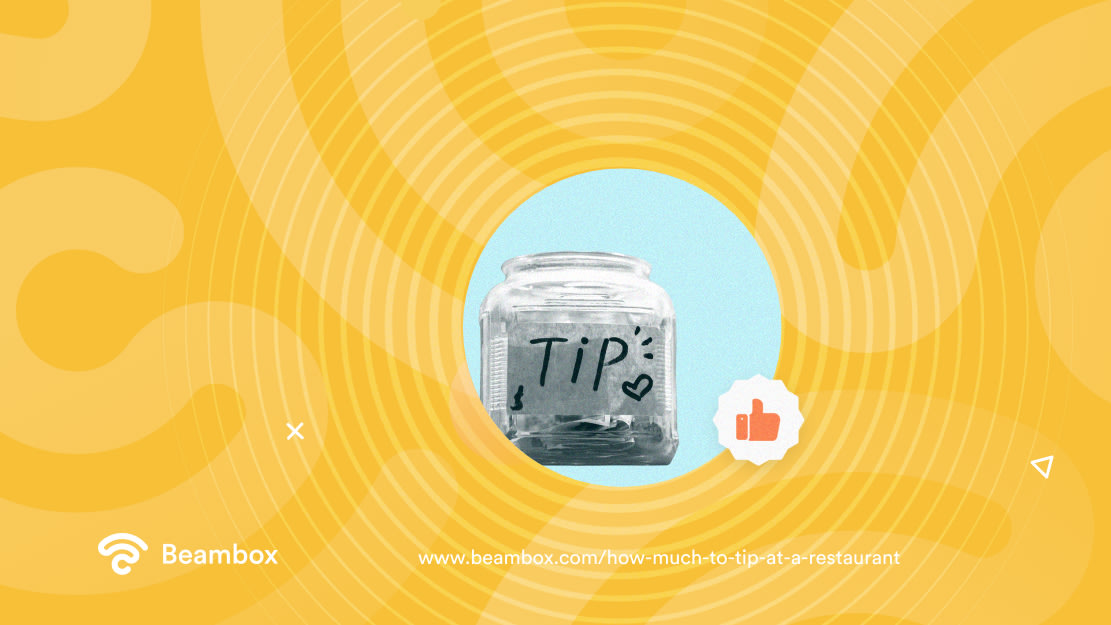Knowing how much to tip at a restaurant is a big question and deal when it comes to customer etiquette. A lot of factors come into play. Are we talking about full-service restaurants? Carry-out restaurants? Did the restaurant have poor service, a service fee already added, or perhaps even mandatory gratuities?
Determining how much to tip is mind-boggling until you figure out a nose for each situation. 10% is the standard tip when dining out. But in this restaurant tipping guide, we’ll give more nuance to this – rather blanket-like – tipping solution.
Let’s look at the factors that impact tipping etiquette and how much you should tip in each situation. Don’t stress the world of delicate tipping expectations. You’ll have it figured out in no time.

How Much to Tip at a Restaurant: What Is Tipping at Restaurants?
Before we get into how much to tip at a restaurant, what is tipping? Understanding the meaning of tipping and where it began is essential. At its most fundamental level, tipping is a modern social norm to show appreciation for wait staff for good service. It involves giving your server a percentage of your overall bill total - usually in cash.
However, it has some pretty murky and controversial beginnings, and people believe it originates from a caste system. It’s worth looking into the history of tipping to understand how it has developed as a practice over time.
Knowing how restaurants and servers handle tips after the money leaves your hand is also essential. Some tips go into tip pools, traditionally more common in the UK than in the US or Europe. These tips go to management to share the overall tips between staff, usually based on days and hours worked.
Some tips stay directly with your server. If you tip by card, this is more likely to go into a tip pool. Cash is more likely to stay with the server. If you need help, you can subtly ask your server whether the restaurant pools tips.
It is also interesting to know that not everyone tips the same. In fact, there are actually tipping trends that you can predict top tippers with.

How Much to Tip at a Restaurant: Why Is It Important to Tip at Restaurants?
Knowing how much to tip at a restaurant is essential for two main reasons: morals and social etiquette. Social etiquette is a societal expectation and simply refers to behaviors people deem positive. Tipping at a restaurant portrays you in a more positive light to others. Secondly, though, tipping at a restaurant is important morally.
Many staff rely on tips to stay afloat, and tipping is a huge part of some workers’ incomes. For instance, bartenders make anywhere from $50 to $300 to $1,800 a night on tips. This depends on where they work and their experience, but you can see that it makes a sizable difference.
And since the average bartender earns between $12 and $16 an hour, tips make a huge difference to the overall salary. It is sadly also common for employers to underpay employees because they can make a difference with tips. Some sketchy employers even pay bartenders as low as $8 an hour - and that’s just on official records.
Tipping at restaurants is an integral part of etiquette, but it also shows your respect for your server.
How Much to Tip at a Fancy Restaurant
We’ll drop you a controversial opinion. Tipping shouldn’t matter where you are dining if you pay attention to our two main reasons you should tip. You shouldn’t be asking how much to tip at a fancy restaurant - just how much to tip at a restaurant. 10-15% remains the average, acceptable tip regardless of whether you had poor service, even at a fancy restaurant. Still, there are a few differences to keep in mind.
Firstly, fancy restaurants are more likely to be full-service restaurants. This means that staff are likely to perform more duties than carry-out restaurants. They will serve you, advise you on wine lists, and likely spend more time prepping restaurant layouts. Tipping expresses gratitude, so more complex cuties deserve higher tips. If you look at it like this, you may wish to be more generous with your tip.
However, secondly, you should also consider that fancy restaurants are more likely to have mandatory gratuities. This means that restaurants automatically add a service fee to your bill at the end of your meal. In this case, you don’t need to tip at all. You can spot a service fee by looking at your bill total, which is added to your receipt.
So, let’s summarize how much to tip at a restaurant. When tipping at a fancy restaurant, assume that you will be tipping 10% if a service fee isn’t included. Suppose you know that you received extra services like wine advice, round this up to 15%. You can tip around 20% if you feel the service was incredible.
How Much to Tip a Valet at a Restaurant
So, you know about fancy restaurants, but how much to tip a valet at a restaurant? First things first, a valet is someone who parks cars for a hospitality venue - be that a hotel or restaurant.
The general answer to this question is that valet tips are usually $2-5 and should be made in cash. This can seem low, so use your discretion if you’d like to tip restaurant valets higher. Having some small notes available to quickly tip without scrambling for cash is a good idea.

How Much to Tip at a Restaurant in the US vs. in Europe
In the US, the question of how much to tip at a restaurant attracts much higher answers. 10% is a much lower tip in the US than it is in Europe. In Europe, 10% tips are much more common and the standard norm.
While in the US, you tend to see 15%, 20%, and 25% tips. There are a few reasons for this, and as a whole, it is one of the most significant cultural differences. These are the main differences you should expect when tipping in the US versus in Europe:
- In the US, tipping is seen as a way of supplementing income. Often, wages are lower because staff make up the difference with tips. In Europe, tipping is mainly seen as an addition to salary and a marker of respect and appreciation for individuals.
- In the US, tipping is at restaurants and shops, bars, and other services. It is not customary in Europe to regularly tip bar staff, and tipping happens primarily in restaurants.
- In the US, 20% is the standard expectation for restaurant tips. In Europe, 10% is the norm.
- In the US, you will be asked to tip - servers usually offer a menu to select the amount. In Europe, nobody will ask, and it is generally up to you to leave it on your table.
- In the US, wait staff are likely to confront you over a low tip; it’s rude not to tip. In Europe, discussing tips is typically seen as rude, and tipping isn’t always socially necessary or acceptable.
- In both Europe and the US, cash is king. Cash is more likely to stay with the individual server and, therefore, is the most socially acceptable way to tip.
Final Thoughts: How Much to Tip at a Restaurant as a General Rule
Tipping at a restaurant can seem like a minefield. But now you know how much to tip at a restaurant generally (yes, that 10% works brilliantly), you’ll be fine. The simple rule is 10 to 15% for full-service restaurants - whether they are fancy restaurants or not.
While tipping carry-out restaurants is a little more flexible, it is customary to tip delivery drivers at the complete 10%. And if you really appreciate any restaurant-related service, a 20-25% tip is seen as above and beyond. Keep these general rules in mind, and you’ll do great.
It is important to remember that tipping is a cultural practice, so that it will vary from country to country. The most extreme examples of regional variations regarding tipping are between the US and Europe. In the US, higher tips are more socially acceptable, whereas in Europe, 10% will do just fine.
Here at Beambox, restaurants are our bread and butter. We use a WiFi platform to help restaurant businesses better connect with their customers. By using multi-strategy approaches, we ensure that profits stay high and also help attract customer loyalty. Start your Beambox free trial today. We’ll help you understand more than just how much to tip at a restaurant.
Get Started With Free WiFi Marketing
Beambox helps businesses like yours grow with data capture, marketing automation and reputation management.
Sign up for 30 days free